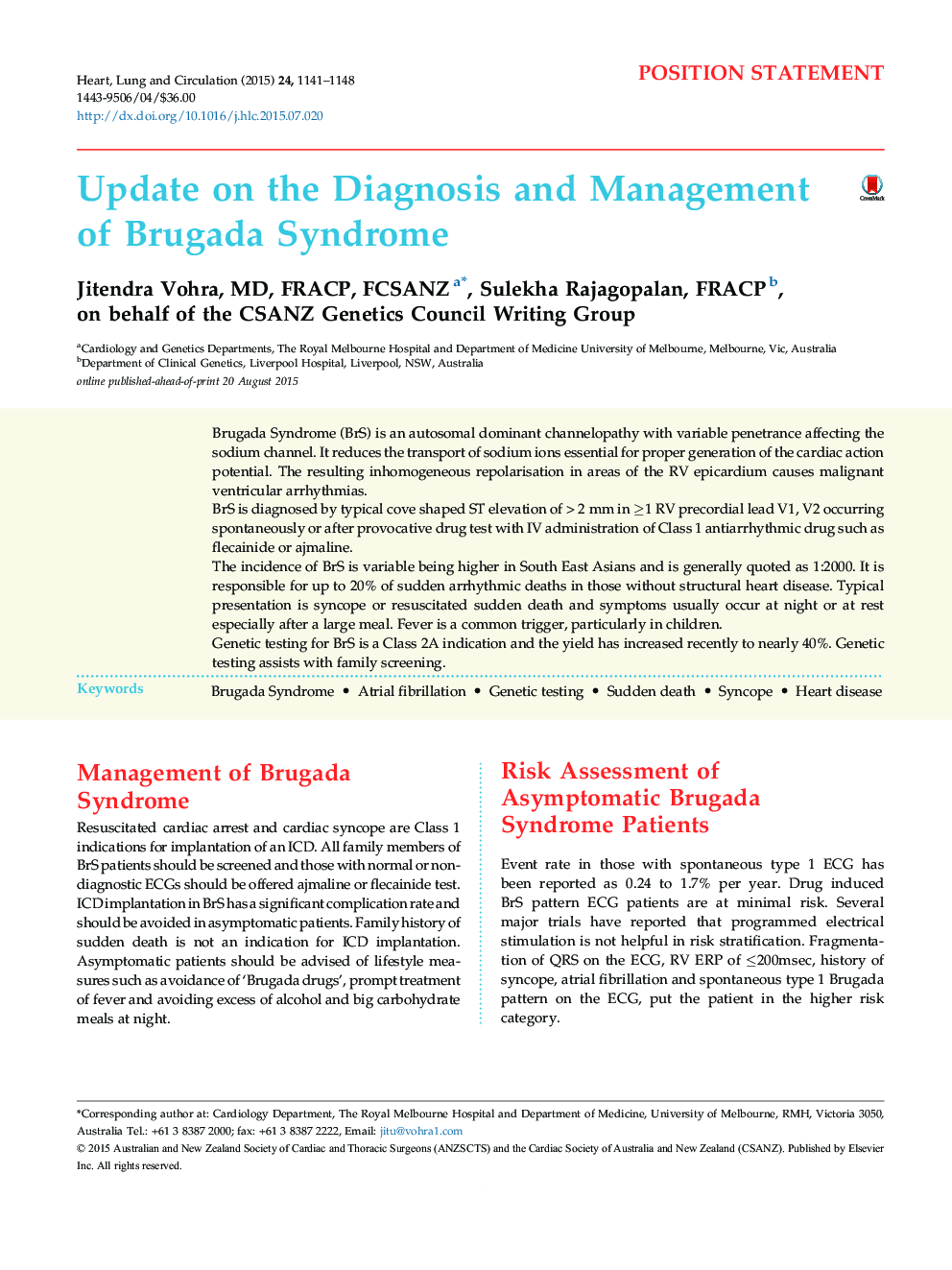| Article ID | Journal | Published Year | Pages | File Type |
|---|---|---|---|---|
| 5959008 | Heart, Lung and Circulation | 2015 | 8 Pages |
Brugada Syndrome (BrS) is an autosomal dominant channelopathy with variable penetrance affecting the sodium channel. It reduces the transport of sodium ions essential for proper generation of the cardiac action potential. The resulting inhomogeneous repolarisation in areas of the RV epicardium causes malignant ventricular arrhythmias.BrS is diagnosed by typical cove shaped ST elevation of > 2 mm in â¥1 RV precordial lead V1, V2 occurring spontaneously or after provocative drug test with IV administration of Class 1 antiarrhythmic drug such as flecainide or ajmaline.The incidence of BrS is variable being higher in South East Asians and is generally quoted as 1:2000. It is responsible for up to 20% of sudden arrhythmic deaths in those without structural heart disease. Typical presentation is syncope or resuscitated sudden death and symptoms usually occur at night or at rest especially after a large meal. Fever is a common trigger, particularly in children.Genetic testing for BrS is a Class 2A indication and the yield has increased recently to nearly 40%. Genetic testing assists with family screening.
